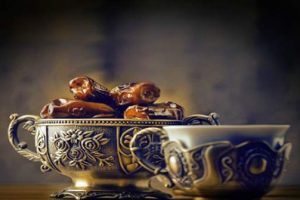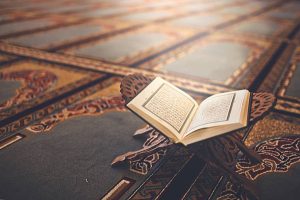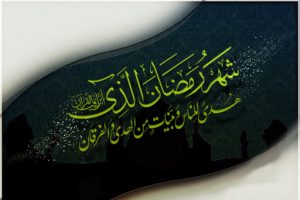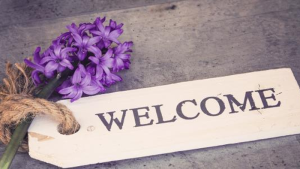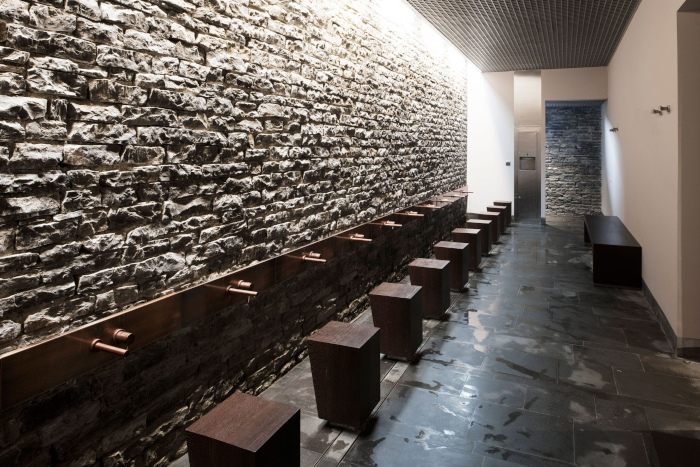
1. Q: What are the faraaidh of wudhu?
A: The faraaidh of wudhu are as follows:
- Washing the entire face once.
- Washing the arms including the elbows once.
- Making masah of at least one quarter of the head.
- Washing both the feet including the ankles once.[1]
2. Q: Which parts of the face should be washed in wudhu?
A: The entire face should be washed in wudhu i.e. from the top of the forehead till beneath the chin, and from one ear to the other.
3. Q: Is it necessary to wash the area between the sideburns and ears in wudhu?
A: Yes, it is fardh (compulsory).
4. Q:Is it necessary for one to repeat the masah in the case where one had his hair cut after making wudhu?
A: No, it is not necessary.[2]
5. Q:Is it necessary to remove rings, bangles and watches when making wudhu?
A: If water reaches the area beneath the rings, bangles and watches without removing them, it will not be necessary to remove them.[3]
6. Q: What is the method of making khilaal of the beard?
A: Khilaal of the beard should be made by passing the wet fingers of the right hand through the beard from beneath the chin.[4]
7. Q: What are the sunnats of wudhu?
A: The sunnats of wudhu are as follows:
- To make niyyah (intention of wudhu).
- To make miswaak.
- To recite the tasmiyah (bismillah).
- To wash the hands up to the wrists.
- To gargle the mouth.
- To put water into the nostrils.
- To make khilaal of the beard.
- To make khilaal of the fingers and toes.
- To wash each limb thrice.
- To make masah of the entire head once.
- To make masah of the ears.
- To make wudhu in sequence.
- To wash each limb, one after the other, without a delay, in such a manner that the limbs do not dry before the wudhu is completed.[5]
8. Q: Is it necessary to remove ointment from wounds or cracks in the feet or hands at the time of wudhu?
A: If passing water over the wounds or cracks will be harmful (or delay the process of healing), it will not be necessary to remove the ointment. Making masah (i.e. merely passing wet hands over the wound or crack) of that limb will suffice.[6]
9. Q: If a person’s hand is amputated below the elbow, does he have to wash the remaining portion of his hand till the elbow in wudhu?
A: He will have to wash the remaining portion of his hand which is below the elbow, including the elbow.[7]
10. Q: If one is performing wudhu in the bathroom, and there is also a toilet in the same bathroom, then should one recite the duas of wudhu?
A: If the basin where one is making wudhu is close to the toilet then one should not recite the duas of wudhu.[8]
[1] أركان الوضوء أربعة وهى فرائضه الأول غسل الوجه … والثاني غسل يديه مع مرفقيه والثالث غسل رجليه مع كعبيه والرابع مسح ربع رأسه (نور الايضاح صـ 30)
[2] (ولا يعاد الوضوء) بل ولا بل المحل (بحلق رأسه ولحيته كما لا يعاد) الغسل للمحل ولا الوضوء (بحلق شاربه وحاجبه و قلم ظفره) وكشط جلده (الدر المختار 1/101)
[3] وفي مجموع النوازل تحريك الخاتم سنة إن كان واسعا وفرض إن كان ضيقا بحيث لم يصل الماء تحته كذا في الخلاصة وهو ظاهر الرواية هكذا في المحيط (الفتاوى الهندية 1/5)
[4] (وتخليل اللحية) لغير المحرم بعد التثليث ويجعل ظهر كفه إلى عنقه
قال العلامة ابن عابدين رحمه الله (قوله وتخليل اللحية) هو تفريق شعرها من أسفل إلى فوق بحر وهو سنة عند أبي يوسف وأبو حنيفة ومحمد يفضلانه ورجح في المبسوط قول أبي يوسف كما في البرهان شرنبلالية وفي شرح المنية والأدلة ترجحه وهو الصحيح اهـ قال في الحلية والظاهر أن هذا كله في الكثة أما الخفيفة فيجب إيصال الماء إلى ما تحتها اهـ وجزم به الشرنبلالي في متنه قوله (لغير المحرم) أما المحرم فمكروه نهر قوله (بعد التثليث) أي تثليث غسل الوجه إمداد … ثم اعلم أن هذا التخليل باليد اليمنى كما صرح به في الحلية وهو ظاهر (رد المحتار 1/117)
[5] (وسننه) … (البداية بالنية) … (و) البداية (بالتسمية) … (و) البداية (بغسل اليدين) … (إلى الرسغين) … (والسواك) … (وغسل الفم) أي استيعابه ولذا عبر بالغسل أو للاختصار (بمياه) ثلاثة (والأنف) ببلوغ الماء المارن (بمياه) وهما سنتان مؤكدتان مشتملتان على سنن خمس الترتيب والتثليث وتجديد الماء وفعلهما باليمنى (والمبالغة فيهما) بالغرغرة ومجاوزة المارن (لغير الصائم) لاحتمال الفساد … (وتخليل اللحية) لغير المحرم بعد التثليث ويجعل ظهر كفه إلى عنقه (و) تخليل (الأصابع) اليدين بالتشبيك والرجلين بخنصر يده اليسرى بادئا بخنصر رجله اليمنى وهذا بعد دخول الماء خلالها فلو منضمة فرض (وتثليث الغسل) المستوعب … (ومسح كل رأسه مرة) … (وأذنيه) معا ولو (بمائه) … (والترتيب) المذكور في النص … (والولاء) (الدر المختار 1/ 102-122)
[6] فروع في أعضائه شقاق غسله إن قدر وإلا مسحه وإلا تركه ولو بيده ولا يقدر على الماء تيمم
قال العلامة ابن عابدين رحمه الله (قوله تيمم) زاد في الخزائن وصلاته جائزة عنده خلافا لهما ولو كان في رجله فجعل فيه الدواء يكفيه إمرار الماء فوقه ولا يكفيه المسح ولو أمره فسقط إن عن برء يعيده وإلا فلا كما في الصغرى اهـ ابن عبد الرزاق (رد المحتار 1/102)
[7] ولو قطع من المرفق غسل محل القطع
قال العلامة ابن عابدين رحمه الله (قوله ولو قطع الخ) قال في البحر ولو قطعت يده أو رجله فلم يبق من المرفق والكعب شيئ سقط الغسل ولو بقي وجب (رد المحتار 1/102)
[8] وفي محل نجاسة فيسمي بقلبه
قال العلامة ابن عابدين رحمه الله: الظاهر أن المراد أنه يسمي قبل رفع ثيابه إن كان في غير المكان المعد لقضاء الحاجة وإلا فقبل دخوله فلو نسي فيهما سمى بقلبه ولا يحرك لسانه تعظيما لاسم الله تعالى (رد المحتار 1/109)
 Ihyaaud Deen An Effort to Revive Deen in Totality
Ihyaaud Deen An Effort to Revive Deen in Totality
